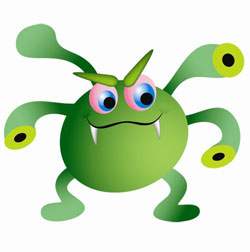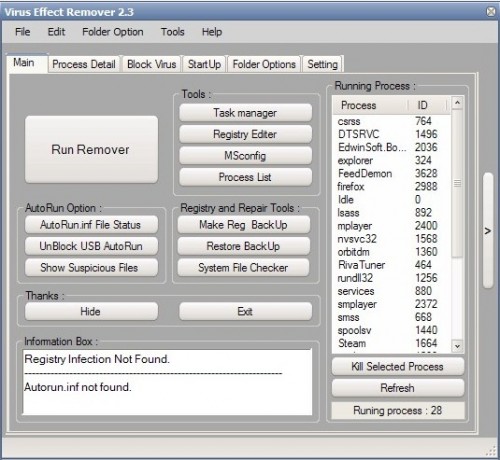Mafia is a term used to describe a number of criminal organizations around the world. The first organization to bear the label was the Sicilian Mafia based in Sicily, known to its members as Cosa Nostra. In the United States, "the Mafia" generally refers to the Italian American Mafia. Other high level organized crime groups such as the American prison gang the Mexican Mafia use the term "Mafia" to describe their group. Latin American drug cartels are often considered Hispanic or Latino Mafias. Other international organizations described as mafias include the Russian Mafia, the Irish Mob, the Chinese Triads, the Japanese Yakuza, the Neapolitan Camorra, Calabrian 'Ndrangheta, and the Apulian Sacra Corona Unita. There are also a number of localized mafia organizations around the world bearing no link to any specific ethnic background.
Today, crime is sometimes thought of as an urban phenomenon, but for most of human history it was the rural interfaces that encountered the majority of crime. (Keep in mind, for most of human history, rural areas were the vast majority of inhabited places). For the most part within a village members kept crime at very low rates, however outsiders, such as Pirates, highwaymen and bandits attacked trade routes and roads, at times severely disrupting commerce, raising costs, insurance rates and prices to the consumer. According to criminologist Paul Lunde, "Piracy and banditry were to the pre-industrial world what organized crime is to modern society."
As Lunde states, "Barbarian conquerors, whether Vandals, Goths, Norsemen, Turks or Mongols are not normally thought of as organized crime groups, yet they share many features associated with thriving criminal organizations. They were for the most part non-ideological, predominantly ethnically based, used violence and intimidation, and adhered to their own codes of law." Terrorism is linked to OC, but has political aims rather than solely financial ones, so there is overlap but separation between terrorism and OC.
Cressey's Cosa Nostra model studied Mafia families exclusively and this limits his broader findings. Structures are formal and rational with allocated tasks, limits on entrance, and influence the rules established for organisational maintenance and sustainability. In this context there is a difference between organised and professional crime; there is well-defined hierarchy of roles for leaders and members, underlying rules and specific goals that determine their behavior, and these are formed as a social system, one that was rationally designed to maximize profits and to provide forbidden goods. Albini saw organised criminal behaviour as consisting of networks of patrons and clients, rather than rational hierarchies or secret societies. The networks are characterised by a loose system of power relations. Each participant is interested in furthering his own welfare. Criminal entrepreneurs are the patrons and they exchange information with their clients in order to obtain their support. Clients include members of gangs, local and national politicians, officials of the govt and people engaged in legitimate business. People in the network may not directly be part of the core criminal organization. Furthering the approach of both Cressey and Albini, Ianni and Ianni studied Italian-American crime syndicates in New York and other cities. Kinship is seen as the basis of organised crime rather than the structures Cressey had identified; this includes fictive godparental and affinitive ties as well as those based on blood relations, and it is the impersonal actions, not the status or affiliations of their members, that define the group. Rules of conduct and behavioural aspects of power and networks and roles include the following:
Strong family ties are derived from the traditions of southern Italy, where family rather than the church or state is the basis of social order and morality.
One of the most important trends to emerge in criminological thinking about OC in recent years is the suggestion that it is not, in a formal sense, 'organized' at all. Evidence includes: lack of centralized control, absence of formal lines of communication, fragmented organizational structuree. It is distinctively disorganized. For example, Seattle's crime network in the 1970s and 80s consisted of groups of businessmen, politicians and of law enforcement officers. They all had links to a national network via Meyer Lansky, who was powerful, but there was no evidence that Lansky or anyone else exercised centralized control over them. While some crime involved well-known criminal hierarchies in the city, criminal activity was not subject to central management by these hierarchies nor by other controlling groups, nor were activities limited to a finite number of objectives. The networks of criminals involved with the crimes did not exhibit organizational cohesion. Too much emphasis had been placed on the Mafia as controlling OC. The Mafia were certainly powerful but they "were part of a heterogeneous underworld, a network characterized by complex webs of relationships." OC groups were violent and aimed at making money but because of the lack of structure and fragmentation of objectives, they were 'disorganised'. Further studies showed neither bureaucracy nor kinship groups are the primary structure of organized crime, rather they were in partnerships or a series of joint business ventures. Despite these conclusions, all researchers observed a degree of managerial activities among the groups they studied. All observed networks and a degree of persistence, and there may be utility in focusing on the identification of orgainising roles of people and events rather than the group's structure. There may be three main approaches to understand the organisations in terms of their roles as social systems:
International consensus on defining organized crime has become important since the 1970s due its increased prevalence and impact. e.g. UN in 1976 and EU 1998. OC is "…the large scale and complex criminal activity carried on by groups of persons, however loosely or tightly organized for the enrichment of those participating at the expense of the community and its members. It is frequently accomplished through ruthless disregard of any law, including offences against the person and frequently in connexion with political corruption." (UN) "A criminal organization shall mean a lasting, structured association of two or more persons, acting in concert with a view to committing crimes or other offences which are punishable by deprivation of liberty or a detention order of a maximum of at least four years or a more serious penalty, whether such crimes or offences are an end in themselves or a means of obtaining material benefits and, if necessary, of improperly influencing the operation of public authorities." (UE) Not all groups exhibit the same characteristics of structure. However, violence and corruption and the pursuit of multiple enterprises and continuity serve to form the essence of OC activity. There are eleven characteristics from the European Commission and Europol pertinent to a working definition of organised crime. Six of those must be satisfied and the four in italics are mandatory. Summarised they are: with the Convention against Transnational Organized Crime (the Palermo Convention) having a similar definition: Others stress the importance of power, profit and perpetuity, defining organised criminal behaviour as:
Today, crime is sometimes thought of as an urban phenomenon, but for most of human history it was the rural interfaces that encountered the majority of crime. (Keep in mind, for most of human history, rural areas were the vast majority of inhabited places). For the most part within a village members kept crime at very low rates, however outsiders, such as Pirates, highwaymen and bandits attacked trade routes and roads, at times severely disrupting commerce, raising costs, insurance rates and prices to the consumer. According to criminologist Paul Lunde, "Piracy and banditry were to the pre-industrial world what organized crime is to modern society."
As Lunde states, "Barbarian conquerors, whether Vandals, Goths, Norsemen, Turks or Mongols are not normally thought of as organized crime groups, yet they share many features associated with thriving criminal organizations. They were for the most part non-ideological, predominantly ethnically based, used violence and intimidation, and adhered to their own codes of law." Terrorism is linked to OC, but has political aims rather than solely financial ones, so there is overlap but separation between terrorism and OC.
 Computer viruses |  Computer viruses will |  \x26#39;STUXNET\x26#39; SUPER COMPUTER VIRUS |  With this anti-virus software |  your computer virus free: |
 Computer Image Gallery |  Computer Viruses (What They |  computer virus |  computer viruses 300x244 How |  I think I got a computer virus |
One of the most important trends to emerge in criminological thinking about OC in recent years is the suggestion that it is not, in a formal sense, 'organized' at all. Evidence includes: lack of centralized control, absence of formal lines of communication, fragmented organizational structuree. It is distinctively disorganized. For example, Seattle's crime network in the 1970s and 80s consisted of groups of businessmen, politicians and of law enforcement officers. They all had links to a national network via Meyer Lansky, who was powerful, but there was no evidence that Lansky or anyone else exercised centralized control over them. While some crime involved well-known criminal hierarchies in the city, criminal activity was not subject to central management by these hierarchies nor by other controlling groups, nor were activities limited to a finite number of objectives. The networks of criminals involved with the crimes did not exhibit organizational cohesion. Too much emphasis had been placed on the Mafia as controlling OC. The Mafia were certainly powerful but they "were part of a heterogeneous underworld, a network characterized by complex webs of relationships." OC groups were violent and aimed at making money but because of the lack of structure and fragmentation of objectives, they were 'disorganised'. Further studies showed neither bureaucracy nor kinship groups are the primary structure of organized crime, rather they were in partnerships or a series of joint business ventures. Despite these conclusions, all researchers observed a degree of managerial activities among the groups they studied. All observed networks and a degree of persistence, and there may be utility in focusing on the identification of orgainising roles of people and events rather than the group's structure. There may be three main approaches to understand the organisations in terms of their roles as social systems:
 Computer virus |  A stubborn computer virus has |  A computer virus is a computer |  Computer Virus |  Computer virus is one of the |
 Virus Removal Service |  computer virus effect remover |  computer virus. Image Credit |  PC Virus turns 25 |  a computer that has virus |
No comments:
Post a Comment